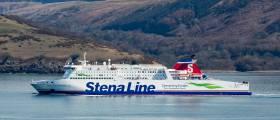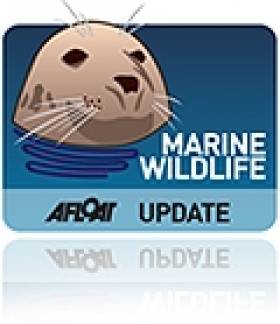Displaying items by tag: refit
#StenaRefit - Refit of all seven ships of Stena Line's Irish Sea north ferry fleet totalling £5m has recently been completed.
The work carried out at the Harland & Wolff shipyard in Belfast took over a 4-month period. This involved careful synchronised dry-docking visits being managed by Stena Line’s Clyde-based sister company Northern Marine Ferries. The ferries including freight-only all operate on routes from Belfast to Cairnryan, Heysham (freight) and Birkenhead (Liverpool).
The 2017 refit programme was the first time that all seven Stena Line vessels went into dry dock sequentially, which represented a significant logistical challenge for the company. As well as coordinating over 150 specialist onsite contractors, Stena Line also introduced temporary relief vessels to ensure that sailing schedules and customer service levels were maintained throughout the entire process.
Paul Grant, Stena Line’s Trade Director (Irish Sea North) said: “Our refit programme is a key aspect of our ship management operation to ensure that our vessels operate as safely and efficiently as possible. Apart from the range of upgrades we have made to our onboard passenger facilities, what’s particularly striking about this year’s refit is that the Stena Line fleet now carries our new company strapline emblazoned on the side of our ships...Connecting Europe for a Sustainable Future...which demonstrates our future sustainability ambitions.”
IWDG Secures 75% Funding for Celtic Mist Refit
#TALL SHIPS - The Irish Whale and Dolphin Group (IWDG) has secured three-quarters of the funding it required to refit its research vessel Celtic Mist.
According to The Irish Times, the Clare Local Development Company has approved the allocation of a €48,000 grant towards the refurbishment of the ketch.
The work will be carried out by Cathal Blunnie and several sub-contractors, and involves stripping down the main cabin and removing the bath and shower to increase space for crew berths.
While the ship's clock will be retained, the ship’s wheel in the main cabin will be removed and presented to the Haughey family as a gesture of appreciation.
As previously reported on Afloat.ie, the 52-foot yacht - which was gifted by the Haughey family to the IWDG to assist in its marine wildlife conservation work - entered dry dock last November in preparation for the refit work, after relocating to its new berth at Kilrush, Co Clare in July.
This followed its last jaunt at sea in its former guise, completing a leg of the Tall Ships Races from Waterford to Greenock in Scotland.
The cost of refurbishing the yacht for research and training purposes is expected to top €60,000, with an annual running cost of some €20,000, for which the IWDG is seeking ongoing financial assistance.
The group aims to get the Celtic Mist back at sea before the summer.
Celtic Mist Will Track Elusive Blue Whale
The infamous Celtic Mist is set to be used to track one of the most elusive marine animals in Irish waters.
The Irish Examiner reports that one of the first duties of the yacht under its new ownership by the Irish Whale and Dolphin Group (IWDG) will be to track down the blue whale, the last of which was spotted off the Irish coast in 2009.
"We’ve made two sightings of the blue whale on the shelf edge but with the Celtic Mist we will be able to go out there for a few weeks and sit there and wait for them," said the IWDG's Dr Simon Berrow.
"Hopefully we will find some more when we bring the Celtic Mist out there. They are very rare."
The blue whale is regarded as the largest animal to have ever lived on earth. They also have an average lifespan of well over 100 years.
As previously reported by Afloat.ie, Celtic Mist was gifted by the Haughey family to the IWDG earlier this year to assist in its marine conservation work.
The yacht competed in a leg of the 2011 Tall Ships Race from Waterford to Scotland before moving to its new home in Co Clare, where it will be refitted for its new life as a research vessel.


























































